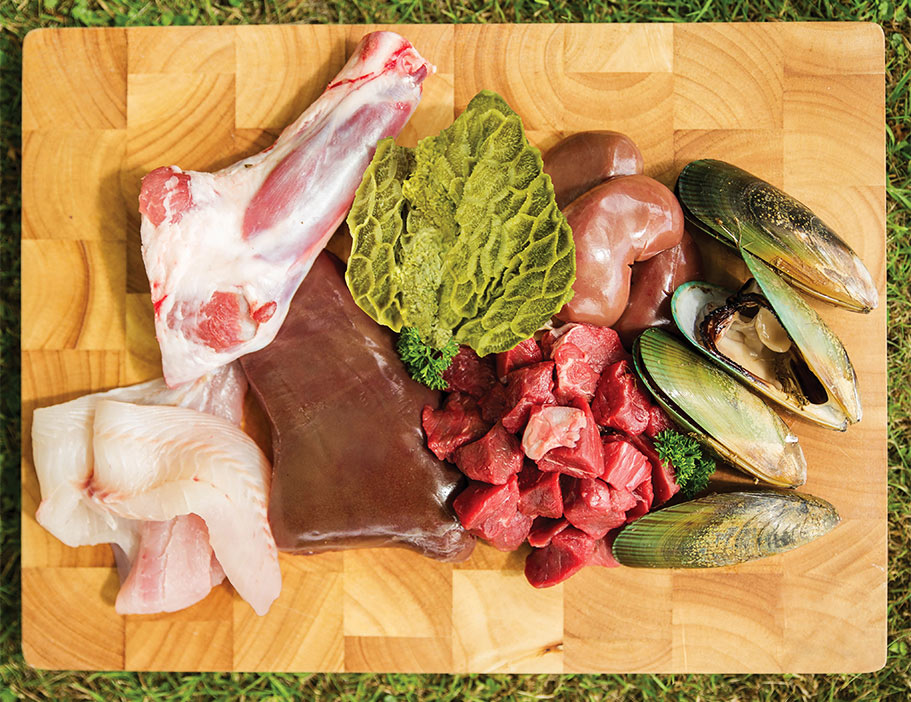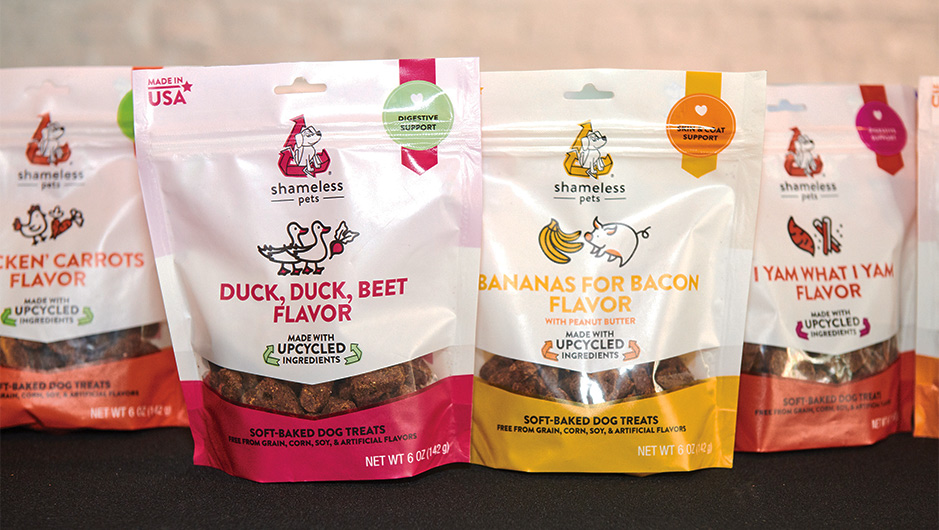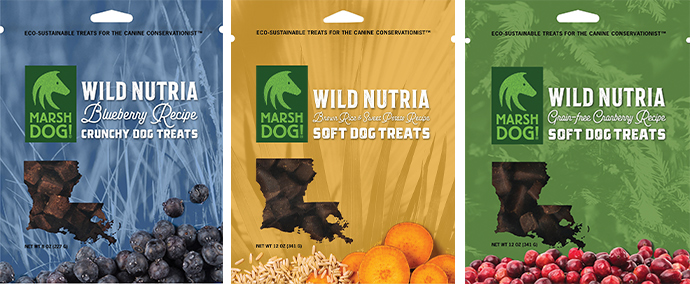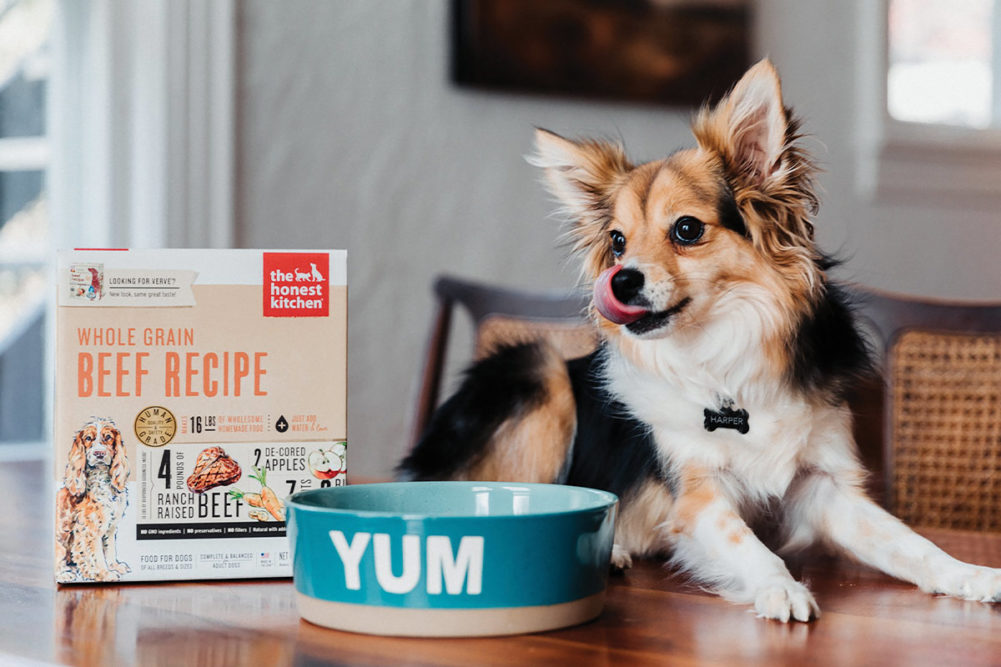This article was published in the March 2020 issue of Pet Food Processing. Read it and other articles from this issue in our March digital edition.
There are several different ways to look at the humanization and sustainability trends in the pet food and treat market. Ingredients and formulations, as well as processes and operational tactics, are either humanizing, environmentally conscious, both or neither, depending on who you ask and what their perspective is.
The two trends coexist in a complicated market flooded with a wide array of consumer demands, some of which are in conflict. Some professionals argue that the humanization of pet food is counterproductive to sustainability demands, while others say both trends present opportunities for innovation in the industry.
The trade-offs
Humanization stems from an increase in awareness and concern among consumers about their pets’ well-being and health. “The public is increasingly aware of and interested in how food for their own consumption is sourced and made, and inevitably this sensibility finds its way into food choices for their pets,” said Rich Kelleman, co-founder and chief executive officer, Bond Pet Foods, Inc., Boulder, Colorado.
Naturally, these pet owners transfer their own nutritional philosophies to their pets. Once human food trends are recognized in the market, Mars Petcare estimates it only takes one and a half to two years for them to cascade into the pet food and treat market. The company, which tracks these trends, said the transition previously took five to seven years.
This acceleration has given rise to a humanized pet market – one which James Bello, co-founder of Shameless Pets, Chicago, said he believes is an encouraging sign for innovators.
“Humanization and sustainability are interrelated trends that support innovation in the pet industry,” Bello explained. “As more people see their pets as family members, we’re seeing growing consumer demand for pet treats and food that meet a higher standard in addressing health, wellness, ethics and sustainability priorities.
“We think this encourages pet companies to develop higher quality products that are better for the environment. We can see this innovation happening in multiple areas, from alternative protein to upcycled ingredients,” he added.
Kelleman pointed to recent growth among companies focused on animal welfare practices, transparency and ingredient traceability, sustainable packaging and other eco- and health-conscious trends driven by this increased demand and awareness.
“Sustainability is a big part of this reassessment. More people are looking for brands and products across the board that have a greater level of responsibility built-in,” he said.
On the other hand, Steve Thomas, vice president, United States protein sales, Darling Ingredients, Irving, Texas, said he believes an increased demand for human-preferred ingredients is contradictory to the pet food industry’s ability to be more sustainable.
“This humanization movement is largely focused on feeding pets the same thing humans eat, but these are not the most balanced or healthy diets for our pets,” said Steve Thomas, Darling Ingredients.
“This humanization movement is largely focused on feeding pets the same thing humans eat, but these are not the most balanced or healthy diets for our pets,” Thomas said. “It also contradicts the demands for a more sustainable world that these same pet owners voice.”
Pet food is a notable contributor to global meat consumption and the environmental ramifications that accompany it, especially the United States market. According to Maria Lange, vice president, pet and cannabis, The Nielsen Group, the dog and cat population in the United States — totaling 163 million — ranks fifth on the global scale of meat consumption, on par with entire countries such as Russia, China and the United States.
Additionally, Gregory Okin of the University of California Los Angeles conducted a study on the environmental impacts of pets and implications of pet food, in which he found dogs and cats in the United States “constitute about 25 to 30% of the environmental impacts from animal production in terms of the use of land, water, fossil fuel, phosphate and biocides.”
Thomas warned the continued humanization of pet food ingredients could cause imbalance in the global protein supply chain and lead to more food waste.
“Long term, humanization within the pet food world means more ‘human-preferred’ meat (i.e., more animals) will need to be grown, which will create more meat co-products that will have to be disposed of in unsustainable ways,” he explained. “In short, it works against our efforts to build a more sustainable world.”
A process perspective
It can also be useful to look at the sustainability and humanization trends from a different point of view. Bregt Verleden, business development specialist for TOMRA Food, Leuven, Belgium, said he views both trends as improvements to pet food quality, thanks to modern food safety technologies and process innovations.
“The humanization is this drive to a better quality of the food… it’s really that [processors] want to bring the pet food to the level of the human foods,” Verleden suggested.
He also believes the pet food industry is becoming more sustainable by incorporating human-grade food safety technologies, which can improve quality and reduce product waste.
TOMRA has adapted optical sorting equipment from the human food processing applications to the pet food industry to help manufacturers reduce finished product waste, avoid recalls and enhance quality control, which Verleden sees as satisfying both sustainability and humanization trends at an operational level.
Old tricks
Luckily, the pet food industry has a built-in failsafe it has been using for decades to provide a sustainable solution for these sorts of conundrums: rendering and the use of animal byproducts. Unfortunately, this is where the humanization and sustainability trends clash the most.
“By demanding human-preferred ingredients, we are not only reducing the availability of those foods for people but turning our backs on sustainable food co-product and meat-sourced ingredients that, when processed properly, are nutritious for our pets,” Thomas explained.

“When rendered products are used, the material is diverted from entering landfills, incinerators or compost heaps where their decomposition could result in harmful emissions and a growth of pathogens,” Thomas said. “By repurposing this material, we reduce its carbon footprint while providing a nutritious, tasty and desirable ingredient for pets.”
Innovative approaches
To quell conflict between these two trends, pet food and treat startups are developing cutting-edge solutions rooted in humanization and eco-consciousness. Two of these young companies, Shameless Pets LLC and Bond Pet Foods, Inc., are confronting concerns about wasted food ingredients, protein scarcity and pet food quality in ways which they believe address both trends at the same time.
Shameless Pets rescues food from waste streams by partnering with food processors and farmers to upcycle their “food waste” into nutritious and sustainable ingredients for dog treats.
“We recover egg and lobster shell byproducts and add them to our Break an Egg treats for natural sources of calcium to support bone health. We also rescue ugly beets from farmers that aid in digestion for our Duck Duck Beet treats,” Bello added.

The company also collects “ugly” produce that doesn’t sell at grocery stores and would otherwise be thrown out as waste.
Since its founding in 2018, the company has saved 25,000 lbs. of food ingredients from waste streams and is on track to save 200,000 lbs. by the end of this year.
“The more food we can rescue, the better for the environment, but also the better for our pups, as these ingredients offer added nutrition. In that sense, we view our product as both sustainable and humanizing,” Bello said.
“Advances in food science, sourcing and technology will accelerate over the next decade, giving pet food companies and pet parents a breadth of new high-quality ingredient options that are demonstrably more responsible and sustainable,” said Rich Kelleman, Bond Pet Foods, Inc.
Consumer demands are also fueling the development of technologies that offer new perspectives on pet food production and formulation, Kelleman added.
“Advances in food science, sourcing and technology will accelerate over the next decade, giving pet food companies and pet parents a breadth of new high-quality ingredient options that are demonstrably more responsible and sustainable,” he said.
Founded in 2017, Bond Pet Foods has been on a mission to create lab-cultured, animal-free proteins for pet food.
“We’re working with biotechnology to make wholly more sustainable pet food from microbial proteins (like yeast and fungi), as well as from meat proteins like chicken, turkey and fish that are harvested without the animal,” Kelleman explained.
The startup’s approach addresses sustainability demands from an animal-welfare perspective and is undoubtedly humanizing, as more and more protein alternatives pop up across the pet and human food markets alike.

Several other sustainable solutions are in the works when it comes to pet food proteins. Alternative sources such as nutritional yeast, insect proteins and the utilization of animals from invasive or overpopulated species are being embraced by the industry to take some pressure off the global protein supply chain.
“We’re trying to do our part to actually expand the pet food supply chain to include more rescued food, not just for our company, but for other human and pet food makers out there,” Bello said.
As the demand for premium pet food grows and pet owners become more attentive to ingredients, sourcing practices and manufacturing methods, the bottom line is this: processors must be thoughtful and transparent about the ramifications their products may have on both pet nutrition and the environment. One trend does not have to come at the cost of the other, but the potential domino effect of these consumer demands is nothing to bark at.
Read more about product development, ingredients and formulation.





